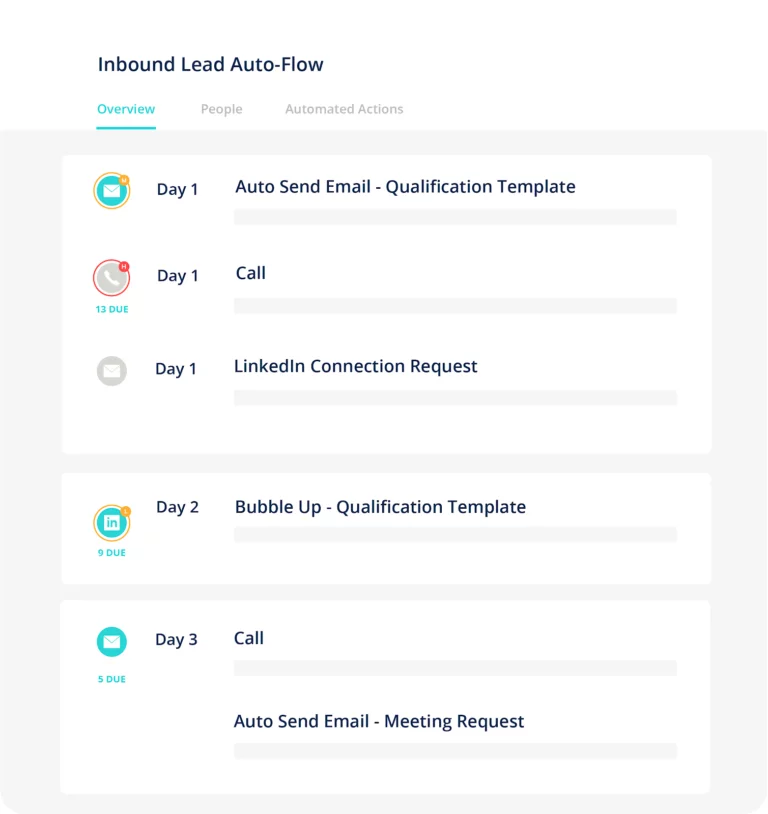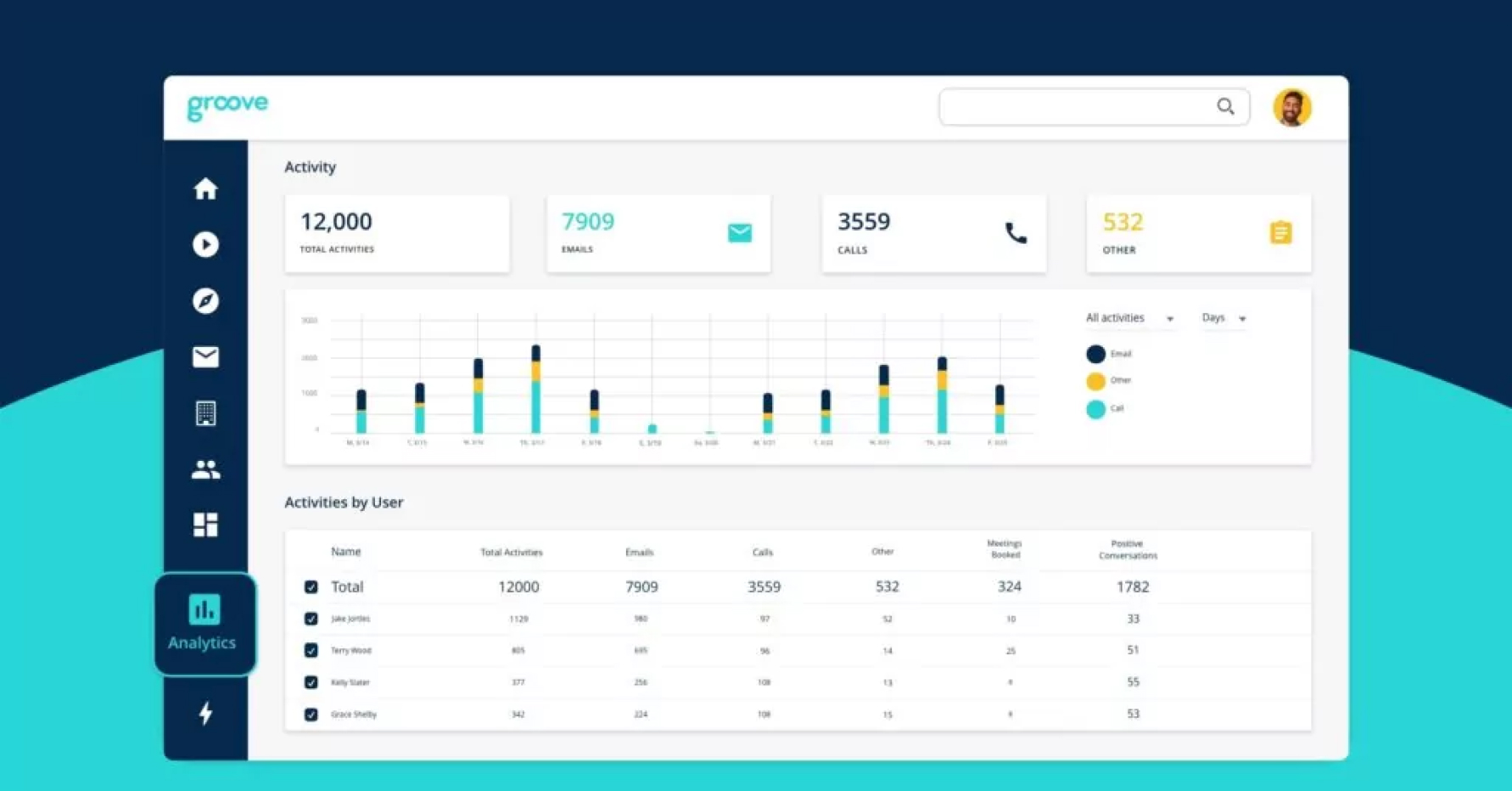If your organization leverages the power of Salesforce to manage consumer relationships and drive sales, then you have likely heard of "sales engagement platforms." The productivity, data analysis, and sales tools provided by these platforms can help you supercharge your Salesforce and drive more revenue.
That said, if you want to get the most out of a new sales engagement platform investment, you need to do some planning. Any time you introduce new technology, you need to follow a clear change management process to ensure a successful rollout.
There are five organizational topics to consider when deploying your sales engagement platform. First, it's essential to understand what a sales engagement platform is so you know what to expect from your latest investment.
What is a sales engagement platform?
In short, a sales engagement platform enhances the capabilities of your CRM. The platform allows you to automate manual tasks, sync data, track performance metrics, and much more.
The top sales engagement platforms also allow reps to seamlessly communicate with leads, manage appointments, and work more efficiently. In addition, sales engagement technologies enhance collaboration by improving transparency and facilitating effortless communication between teams or departments.
Ultimately, sales engagement platforms are designed to streamline non-sales activities, which frees up your sales reps to spend more time building client relationships and generating revenue.
5 factors to consider when implementing a sales engagement platform
When researching sales engagement technologies for your organization or preparing to deploy one of these exciting software platforms, it is vital that you consider the following five issues.
1. The overall state of your company
Before selecting your sales engagement platform, perform a bit of internal introspection. Be honest and examine the current health of your current revenue processes and your CRM. Identify key pain points, potential barriers to growth, organizational inefficiencies, and anything else that may be preventing your revenue team from realizing its true potential.
The purpose of this exercise is to ensure that you never lose sight of your company's overall mission during your search for a sales engagement platform. How can you know when you have found the right solution for your organization if you have not first outlined the biggest challenges you are presently facing?
2. How you intend to manage platform rollout
Although a sales engagement platform offers many benefits to your sales reps and the company as a whole, be prepared for some resistance to change. If you hope to implement your new platform effectively, communication and user buy-in are essential.
Start by developing a cohesive change management rollout strategy as you prepare to deploy your new sales engagement platform.
You should ensure that relevant stakeholders are kept in the loop during the entire process. Actively seek out the input of your reps as well, as this will help your leadership more effectively communicate with the day-to-day users.
Sales reps and mid-level leaders can often provide a fresh perspective on your rollout strategy. They may ask questions that other stakeholders simply have not considered. By including sales teams in the rollout process, your organization can significantly increase employee buy-in and minimize friction during the transition.
3. Your current sales strategy
Implementing a new sales engagement platform presents the perfect opportunity to reexamine your existing sales and content strategies. Gather feedback from sales reps, review your lead generation and sales processes, and analyze content tools such as email templates.
This ensures that your sales and marketing messaging is consistent across all departments. In addition, revisiting your sales strategy gives you the chance to update bland content with more engaging materials and address any tonal inconsistencies in brand messaging.
Keep in mind that you do not have to completely rewrite your sales playbook during this phase. Instead, make incremental changes and develop a strategy to revamp your content over time, as necessary.
4. Know your team's talents and abilities
While leading-edge sales engagement platforms are extremely intuitive and user-friendly, adapting to any new technology involves a learning curve.
With that in mind, it is crucial that you take stock of your team's talents and abilities before deploying any software. By doing so, you can develop more effective training strategies for the purpose of familiarizing your staff with the new platform. You can simplify training and speed up adoption by customizing the platform to fit seamlessly into the workflows of different teams and roles. For example, a Salesforce-native platform will allow you to create a different UI for sales reps working deals and account managers serving customers.
If you fail to properly train your staff on the capabilities of your sales engagement platform, the benefits of your investment will be diminished. To compound matters, reps who struggle with the transition due to inadequate training will also experience a decline in job satisfaction.
5. The lead management workflow
Lastly, you must evaluate your current lead management workflow process. Without an effective lead management flow, your organization will not reap the full benefits of a sales engagement platform.

To create your lead management process flow, know your "buyer personas." Each persona should define one of your target customers, including the pain points they face, which of your product features most appeal to them, etc.
After your personas are developed, the next step is to create a cadence or flow for each ideal customer. A cadence should guide your sales reps in determining when and how often they should contact potential clients.
Finally, you should implement a method of scoring leads and surfacing in-market opportunities. This scoring will help your sales reps know which leads are prime to make a purchase and which ones need additional nurturing. After these processes are implemented, your organization can automate them by leveraging the power of a sales engagement platform.
Facilitate a seamless transition with Groove
By systematically addressing each of the concerns outlined above, you can significantly streamline the implementation of your new sales engagement platform.
Carefully planning out your sales engagement platform deployment is only half the battle. Even the best-laid plans can fall short if they are not built around a great product and a strong relationship with your platform vendor.
Fortunately, Groove is the perfect partner to help you supercharge your Salesforce. Our world-class sales engagement platform is unlike anything else on the market. At Groove, we have empowered more than 70,000 Salesforce users to build stronger relationships, accelerate revenue, and drive growth.
Book your demo today to learn more or see our one-of-a-kind platform in action.


